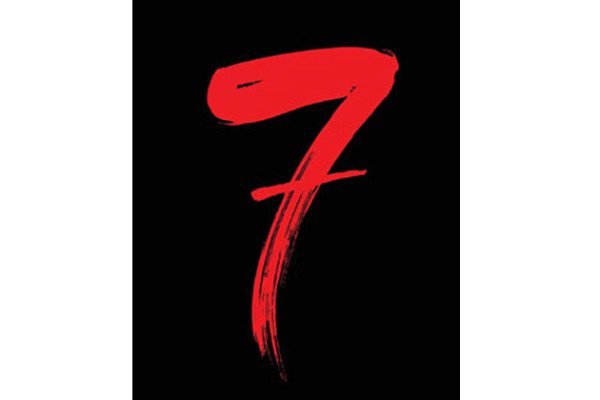The novelists Vikram Chandra and Sujit Saraf share remarkably similar life stories. Both were born in north India. Both went to college in California. Both now live in the San Francisco Bay area and are married to Americans. Both are technologically inclined; Chandra spent time as a freelance computer programmer and consultant, while Saraf once worked for NASA and is now a full-time space scientist at a defence company. And both, in 2007, published novels about crime, corruption and conspiracy in sprawling Indian mega-cities. Chandra’s ‘Sacred Games’ centres around a Sikh police detective and a Hindu mafia don in (of course) Mumbai. Saraf’s ‘The Peacock Throne’ revolves around a hapless chaiwala and a set of conniving baniya politicians in Delhi. Both these books, at least in their non-Indian editions, contain glossaries explaining the Hindi terms that are used.
Long, sleeper-class train journeys have always been my favourite excuse to crack open wrist-straining novels. (When I start such novels at home, I often get so sucked in that I forget all worldly duties.) I devoured most of ‘Sacred Games’ during two 24-hour journeys in February, and I recently finished ‘The Peacock Throne’ on the heels of a trip from Delhi to Mumbai (appropriately). Now, a combined 1750 pages later, I can say that these books only confirm all the stereotypes we’ve all heard ad nauseum about India’s dueling megalopolises: Mumbai as the land of the criminal underworld, but also of Bollywood and of small-town boys making it big; Delhi as the seat of political power, nepotism, cold bureaucracy and communal tension. And tellingly, Mumbai as ultimately loveable despite its warts, in contrast to Delhi, a city where, in Saraf’s worlds, “everyone hates everyone” – and by extension despises the city itself.
Chandra doesn’t go easy on his characters, or on their home city. Mumbai is smelly, crowded, and at times horribly violent. One of the protagonists is a vicious mafia leader with many murders to his name. And yet Chandra brings a humanity and complexity to his characters. Stereotypes abound – cops on the take, aspiring young actresses turning tricks, politicians playing the religion card – but beyond these stereotypes are deeply-layered, nuanced portraits of people striving to find their way in an overwhelming world. We are shown the peaceful family life of an occasionally corrupt, but diligent and caring cop, who makes do in a slum that Chandra neither romanticises nor sensationalises. We witness the doubts and insecurities, and the pangs of conscience of the outwardly brash, confident gangster. And in the end, we care deeply about the flawed, hurt but ultimately sympathetic characters.
In Saraf’s Delhi, there is nary a sympathetic character to be found. The befuddled chaiwala, who finds himself thrust in the midst of pivotal events like the 1984 anti-Sikh riots and the 1990 anti-Mandal protests, is devoid of any defining characteristics. He exists to have things happen to him, not to exercise his own agency. In fact, another character calls him “a man so devoid of distinguishing traits that he is often mistaken for someone else.” If he has zero dimensions (thus making him very difficult to build a novel upon), most of the other characters in the book only have one. A limited set of stock characters – the Nepali sex-worker, the illegal Bangladeshi immigrant, the angry Muslim demagogue, the thieving clerk, the naively idealistic NGO founder – cross paths repeatedly and improbably during major political events. It is these events that push the novel forward, and the characters are either the masterminds unscrupulously planning them or the victims buffeted by their winds.
‘Sacred Games’ too makes use of major historical events, especially the impact of Partition. Both novels dwell on the violent destruction of Babri Masjid and its aftermath. Both feature people cynically exploiting communal riots. Chandra’s gangster says, “Riots are useful in all kinds of ways to all kinds of people,” while Saraf’s politician says, “It is wonderful what a riot can do for a man.” Yet Chandra goes beyond both the cynicism and shock of the violence to paint deeply human pictures of people driven to their most inhumane. Chandra shows the vulnerability and confusion beneath his protagonists’ glib words; but with Saraf’s characters, we can only see the surface. And the surface of his Delhi is an ugly one indeed.
As a contented resident of Delhi, I’ve often wondered why it’s acquired such a bad reputation, why everyone loves to hate it. The people most enthralled with it seemed to be foreigners like William Dalrymple and Sam Miller, or Indian historians and heritage enthusiasts. Both Delhi and Mumbai are, to a large extent, cities of migrants, but the migrations in Delhi have been tied to more wrenching, traumatic events, whereas Mumbai has enjoyed more continuity as an urban centre. Perhaps this explains the coherence I’ve felt in Mumbai, which is lacking in Delhi.
But these days Delhi seems to be finding its coherence, or at least some swagger. Hating Delhi is, it appears, no longer a prerequisite to being here. Perhaps the Metro has finally brought some sense of geographic order to the city, much as the local railways have long ordered life in Mumbai.
While Delhi has been treated harshly by novelists like Saraf, it has faired better on the silver screen in recent years. I couldn’t bring myself to watch ‘Bol Bachchan’, but I did note that the film is partially set in Delhi. It is thus the latest entry in the growing, diverse list of recent films featuring the national capital, joining ‘Chandi Chowk to China’, ‘Delhi 6’, ‘Cheeni Kum’, ‘Delhi Belly’, and ‘Vicky Donor’, among others. Even the jet-setting ‘Agent Vinod’ set its climax in Delhi. While the elitist rhetoric of Delhi as “world-class city” is tiresome and ultimately dangerous, I’m happy to see my adopted city drop its stereotypes and enjoy some time in the pop culture sun.


